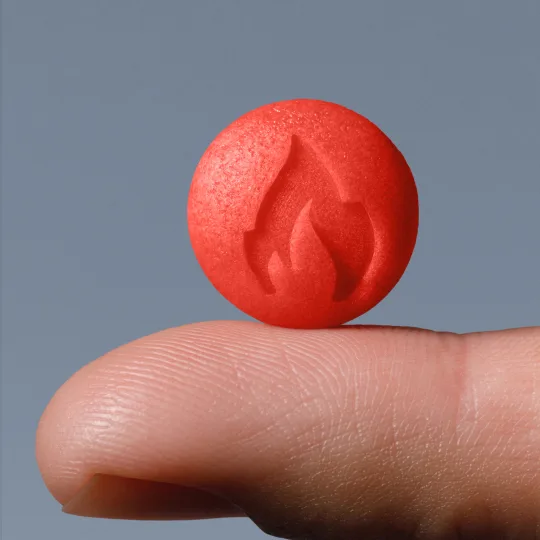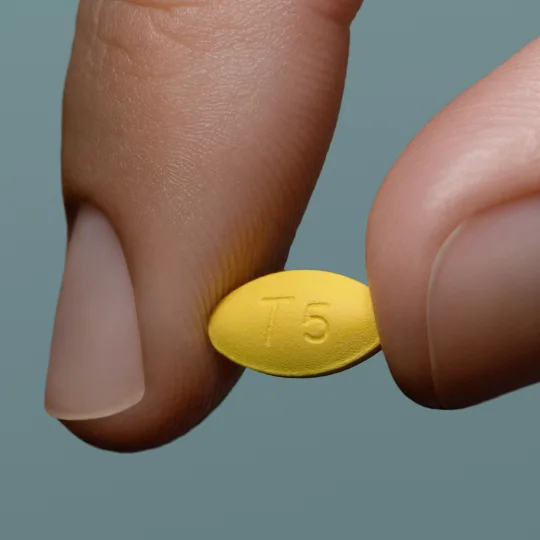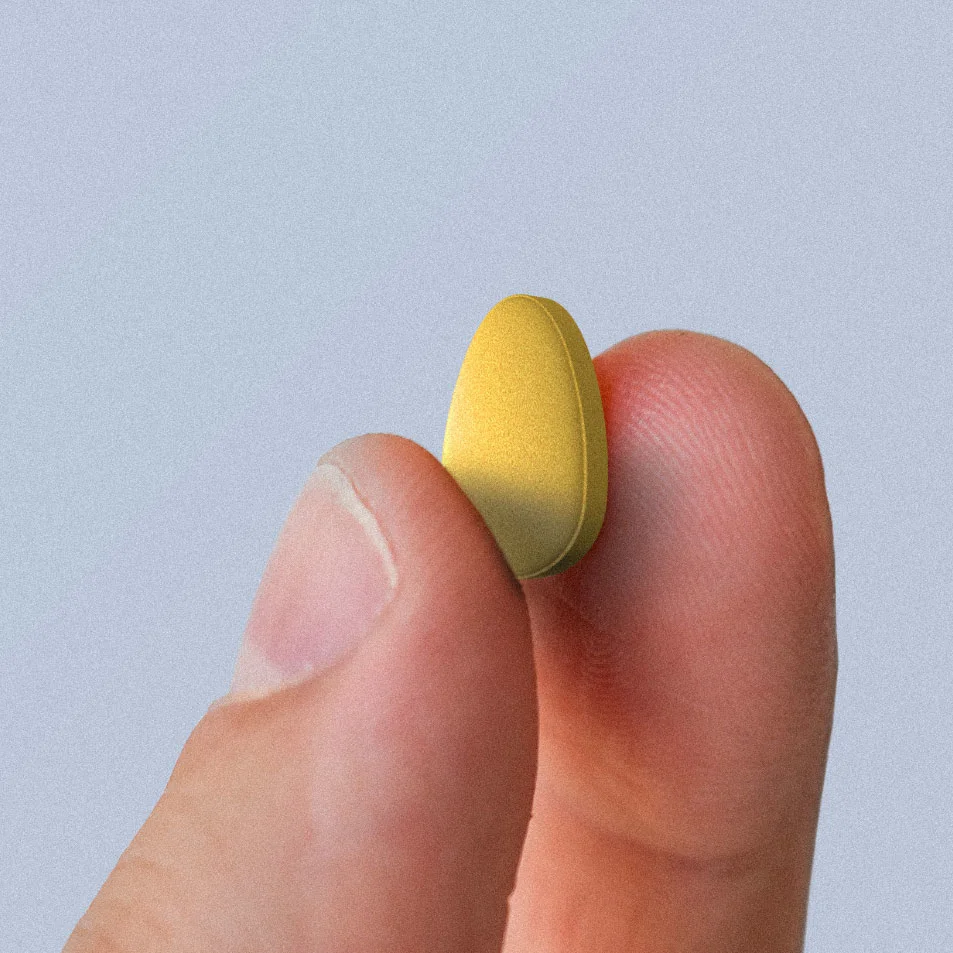Key takeaways
Cialis (tadalafil) is FDA-approved to manage the urinary symptoms of benign prostatic hyperplasia (BPH). It’s also approved to treat erectile dysfunction (ED), making it a good option for those dealing with both ED and an enlarged prostate.
Tadalafil can start to reduce symptoms like frequent urination and a weak urine stream within a week, and many see full benefits within four weeks.
The typical dosage of Cialis for BPH is 5 mg taken once daily, with or without food.
Here's what we'll cover
Here's what we'll cover
Key takeaways
Cialis (tadalafil) is FDA-approved to manage the urinary symptoms of benign prostatic hyperplasia (BPH). It’s also approved to treat erectile dysfunction (ED), making it a good option for those dealing with both ED and an enlarged prostate.
Tadalafil can start to reduce symptoms like frequent urination and a weak urine stream within a week, and many see full benefits within four weeks.
The typical dosage of Cialis for BPH is 5 mg taken once daily, with or without food.
If you have benign prostatic hyperplasia (BPH), aka an enlarged prostate, you may be looking for a treatment to ease those annoying symptoms like frequent trips to the bathroom and a weak urine stream. Curious about Cialis for BPH? You might be familiar with this medication (also known by its generic name, tadalafil) for treating erectile dysfunction (ED), but it’s also approved by the US Food and Drug Administration (FDA) to manage urinary issues related to an enlarged prostate.
How does Cialis work for BPH, and what should you know before starting it? Keep reading for what you need to know.
What is benign prostatic hyperplasia (BPH)?
Benign prostatic hyperplasia (BPH), or an enlarged prostate, is a common condition affecting over half of those assigned male at birth (referred to as men from here on in this article) aged 50 and older. The prostate is a small gland below the bladder. When it enlarges, it can pinch the urethra (the tube that carries urine and semen out of the penis), causing problems with the lower urinary tract and urination. Some men may not notice symptoms at all, and it might only be discovered during routine tests. BPH usually only needs treatment when symptoms are present. Mild BPH may not need treatment at all, while more advanced cases may require surgical treatment.
Common symptoms of BPH may include:
Difficulty starting urination
Weak or interrupted urine stream
A feeling that your bladder isn’t fully empty
Frequent urination, especially at night
Urgency or a sudden need to pee
Leaking urine
Of course, other conditions can cause these symptoms, so it’s important to be evaluated by a healthcare professional before establishing a diagnosis.
While the exact cause of BPH isn’t fully understood, several factors can increase the risk of developing this condition:
Genetics: If your father or brothers had significant BPH, your chances of developing it are higher, with studies showing a four-fold increase in risk for first-degree relatives.
Medical conditions: If you have certain other health conditions, you’re more likely to have BPH. For example, having diabetes, particularly if it needs to be managed with insulin, can increase the risk of developing urinary symptoms of BPH. Obesity and metabolic syndrome have also been linked to BPH, likely due to increased inflammation and hormone imbalances.
Dietary factors: A diet high in protein and vegetables and lower in fat and red meat may reduce the risk of symptomatic BPH, according to a trial of over 4,000 patients.
Note that BPH involves an enlarged prostate, but it is very different from prostate cancer. “Benign” means that the tissue is enlarged but not necessarily cancerous. BPH usually affects the central part of the prostate, while most prostate cancers develop in the outer areas. Typically, prostate cancer does not cause symptoms; it’s most commonly detected with a screening blood test called a PSA (prostate-specific antigen) test. Also, having BPH doesn’t mean you’re more likely to develop prostate cancer. It is possible to have both conditions at the same time, though, so it’s important to get regular check-ups with a healthcare provider.
BPH is closely linked to ED and ejaculation problems, such as decreased semen volume or, occasionally, painful ejaculation. If left untreated, BPH can get worse over time and lead to serious issues like urinary infections, bladder stones, or kidney problems.
How Cialis works for BPH
Tadalafil, the active ingredient in Cialis, is a prescription medication known for its ability to relax smooth muscle tissue and improve blood flow, which is how it works for treating ED. To treat BPH, tadalafil appears to work in a similar way. Since tadalafil primarily improves urinary symptoms like frequent and urgent urination, it is likely that tadalafil works by improving blood flow to the bladder as well as any effect directly on smooth muscles in the prostate. Urinary flow may not improve with tadalafil, but the symptoms get better for many men.
While not a cure for BPH, treatment with tadalafil can make living with the condition—and peeing—much easier.
Curious how fast it works? You may notice some improvement with Cialis for BPH within about one week, with full effects typically seen around four weeks after you start taking it. This timeline is based on the average results of 12-week clinical trials, but individual results can vary.
In some cases, healthcare providers prescribe tadalafil in combination with another medication called finasteride (Proscar) to treat BPH. Finasteride is a type of 5-alpha reductase inhibitor that works by shrinking the prostate, improving blood flow, and improving bladder emptying. The combination of tadalafil and finasteride is also available as the brand-name drug, Entadfi, which contains 5 mg of finasteride and 5 mg of tadalafil in each capsule, taken daily. Entadfi was FDA-approved for initial treatment of BPH symptoms and is still available in the US as a generic preparation.
The two medications work in different ways. Tadalafil works quickly to provide faster relief of symptoms, within 1–4 weeks. Finasteride, on the other hand, helps treat the underlying condition of BPH by gradually shrinking the prostate. It works by blocking a hormone that causes the prostate to enlarge, but it usually takes 3–6 months to see the full benefits.
As always, it’s important you talk to your healthcare provider if you have any questions or concerns when it comes to Cialis (or any other drug) for BPH.
Have better sex with Ro
How to take Cialis for BPH
To treat BPH, Cialis is usually taken once daily. Unlike ED, the dosage of Cialis for BPH doesn’t have an “on demand” or “as needed” option. The daily dosage schedule is intended to provide ongoing, consistent relief from BPH symptoms. If you miss a dose, take it as soon as you remember, but don’t take more than one dose per day.
Cialis, and the generic version, tadalafil, comes as a tablet that you swallow whole. It’s usually taken at the same time every day. Some medications are affected by food, but tadalafil isn’t one of them. You can take tadalafil with or without food.
Not a fan of swallowing pills? Other compounded formulations of tadalafil are available, such as Ro’s Daily Rise Gummies, which contain 7 mg of tadalafil in a fruity-flavored gummy.
Cialis for BPH dosage
For BPH, the typical recommended daily dose of Cialis is 5 mg, taken at the same time each day. This is the same recommended dosage if you’re taking Cialis to treat both ED and BPH. The timing of your dose doesn’t matter as long as it’s around the same time each day—no need to adjust based on when or if you plan to have sex.
Be sure to take the dose prescribed by your healthcare provider. The amount or frequency may differ if you have other health problems, such as kidney or liver disorders, or if you take certain other medications.
Side effects of Cialis for BPH
Cialis for BPH is generally well-tolerated and doesn’t cause many side effects. When side effects do happen, they’re usually mild. In studies on tadalafil for treating BPH or concurrent BPH and ED, the most common side effects reported were:
Headache
Indigestion or upset stomach (dyspepsia)
Back pain and sore muscles
Common cold symptoms, such as sore throat or runny nose
Diarrhea
Pain in your arms and legs
Dizziness
In the same studies, back pain and muscle soreness were generally mild or moderate, and these discomforts usually went away within two days. Less common side effects include acid reflux, nausea, vomiting, joint pain, and muscle spasms.
Very rarely, serious side effects can occur, such as priapism (a prolonged erection lasting more than four hours that may be painful), vision or hearing changes, and severe allergic reactions. Seek medical attention right away if you think you’re experiencing a serious side effect of Cialis.
Cialis may not be the right choice for everyone with BPH. A healthcare provider can determine if it’s safe for you based on your health history and current medications. So, be prepared to share this info when you see your provider, especially if you have heart, liver, or kidney issues, low blood pressure, or certain eye conditions.
For those interested in a combination treatment with Cialis and finasteride, remember that finasteride has a different side effect profile. The most commonly reported side effects of finasteride (meaning those that affected more than 1% of people in clinical trials) are impotence, decreased libido, decreased ejaculate volume, breast enlargement, breast tenderness, and rash.
Cialis contraindications
Cialis may not be right for you if you’re prescribed nitrates or have used them within the last 48 hours. Examples of nitrates are nitroglycerin (NitroStat, NitroDur, and similar prescription drugs for angina or chest pain). The reason for this is it can worsen the potential side effect of low blood pressure. Cialis should also be avoided if you have used street drugs like amyl nitrite (“poppers”). In addition, Cialis isn’t a safe option for people who’ve had an allergic reaction to tadalafil or other tadalafil-containing medications like Adcirca.
Cialis interactions
Let your healthcare provider know about all the medications you take, including over-the-counter drugs, vitamins, and supplements. Some medications, like alpha blockers, blood pressure meds, or certain antibiotics, can interact with Cialis or increase the risk of side effects. To be safe, it’s a good idea to check with your healthcare provider before starting or stopping any other medications while taking Cialis for BPH.
Some over-the-counter (OTC) medicines can worsen the urinary symptoms of BPH. For example, if you have BPH, it’s best to avoid products that contain diphenhydramine and pseudoephedrine. Ask a pharmacist to help you choose a cold or allergy medicine that’s safe for you.
While Cialis doesn’t have any food interactions and isn’t affected by meal timing, drinking a lot of alcohol (5 servings or more) can increase the chance of side effects like headache, dizziness, and low blood pressure (hypotension). So, it’s best to limit the amount of alcohol you consume while taking this medication.
Flomax vs. Cialis for BPH
Cialis isn’t the only treatment option for BPH. Another popular type of prescription medication for BPH are alpha blockers , such as tamsulosin, alfuzosin, and silodosin, which are also known by their brand names, Flomax, Uroxatral, and Rapaflo. They work by blocking alpha receptors. This helps relax the muscles in the prostate and bladder, making it easier for urine to flow, and the bladder to empty.
Flomax (tamsulosin) is the most commonly prescribed of these drugs; it comes as an oral capsule and has a typical dosage of 0.4 mg taken once daily, 30 minutes after a meal. Flomax is often considered a first-line treatment for BPH because it starts working very quickly, offering symptom relief within three days.
But it may cause side effects, including low blood pressure, dizziness, fainting, and loss of ejaculation. It also carries other risks, such as complications in people having cataract surgery. If you are having cataract surgery, then it is important for your eye surgeon to know if you have previously taken tamsulosin. Some people can’t take tamsulosin if they’ve had a severe allergic reaction to sulfa drugs in the past.
When comparing Flomax and Cialis, both are effective for reducing the symptoms of BPH—but only Cialis is FDA-approved for treating both BPH and ED. You can think of Cialis as a two-for-the-price-of-one option for treating both BPH and ED.
It’s possible to take both Flomax and Cialis, with some research showing the combination is better than either drug alone for improving BPH symptoms and ED. However, combining Flomax and PDE5 inhibitors, such as tadalafil, can be risky. Since both drugs cause widening of the blood vessels (vasodilation), the combo may lead to symptoms of low blood pressure (e.g., dizziness or fainting). It’s important to talk to your healthcare provider to find the best treatment options and make sure you’re taking medication safely.
Bottom line
Cialis (tadalafil) is an effective medication for managing BPH, offering consistent relief from symptoms like frequent urination and weak urine stream with a daily 5 mg dose.
Cialis works by relaxing the muscles in the prostate and bladder, helping ease pressure on the urethra and improving urinary flow.
For those with BPH and ED, Cialis can treat both conditions with the same daily dose, offering a one-stop solution for managing these often linked conditions.
If you’re looking for a BPH medication that works fairly quickly, Cialis can help relieve symptoms within 1 week, with full effects typically seen in 4 weeks. In comparison, finasteride (Proscar) takes 3-6 months to kick in, while tamsulosin (Flomax) works within 3 days. A healthcare provider can determine which treatment option or combination is right for you.
Before starting Cialis (or any new medication), it’s important to discuss your health history with your healthcare provider to ensure it’s safe for you, especially if you take nitrates or have other heart problems.
DISCLAIMER
If you have any medical questions or concerns, please talk to your healthcare provider. The articles on Health Guide are underpinned by peer-reviewed research and information drawn from medical societies and governmental agencies. However, they are not a substitute for professional medical advice, diagnosis, or treatment.
Cialis Important Safety Information: Read more about serious warnings and safety info.
DeLay, K. J., Nutt, M., & McVary, K. T. (2016). Ejaculatory dysfunction in the treatment of lower urinary tract symptoms. Translational Andrology and Urology, 5(4), 450–459. doi: 10.21037/tau.2016.06.06. Retrieved from https://pmc.ncbi.nlm.nih.gov/articles/PMC5002000/
Fahmy, G. & Hess, J. (2024). Tadalafil. StatPearls. Retrieved from https://www.ncbi.nlm.nih.gov/books/NBK603743/
Kristal A. R., Arnold K. B., & Schenk J. M. (2008). Dietary Patterns, Supplement Use, and the Risk of Symptomatic Benign Prostatic Hyperplasia: Results from the Prostate Cancer Prevention Trial. American Journal of Epidemiology, 167(8),925–934. doi: 10.1093/aje/kwm389. Retrieved from https://academic.oup.com/aje/article-abstract/167/8/925/85396?redirectedFrom=fulltext
McVary, K. T. (2024). Patient education: Benign prostatic hyperplasia (BPH) (Beyond the Basics). UpToDate. Retrieved from https://www.uptodate.com/contents/benign-prostatic-hyperplasia-bph-beyond-the-basics
Ng, M., Leslie, S. W., & Baradhi, K. M. (2024). Benign prostatic hyperplasia. StatPearls. Retrieved from https://www.ncbi.nlm.nih.gov/books/NBK558920/
Oelke, M., Giuliano, F., Mirone, V., et al. (2012). Monotherapy with tadalafil or tamsulosin similarly improved lower urinary tract symptoms suggestive of benign prostatic hyperplasia in an international, randomised, parallel, placebo-controlled clinical trial. European Urology, 61(5), 917–925. doi: 10.1016/j.eururo.2012.01.013. Retrieved from https://pubmed.ncbi.nlm.nih.gov/22297243/
Porst, H., Kim, E. D., Casabé, A. R., et al. (2011). Efficacy and safety of tadalafil once daily in the treatment of men with lower urinary tract symptoms suggestive of benign prostatic hyperplasia: results of an international randomized, double-blind, placebo-controlled trial. European Urology, 60(5), 1105–1113. doi: 10.1016/j.eururo.2011.08.005. Retrieved from https://www.sciencedirect.com/science/article/abs/pii/S0302283811008657
Sandhu, J. S., Bixler, B. R., Dahm, P., et al. (2023). Management of lower urinary tract symptoms attributed to benign prostatic hyperplasia (BPH): AUA Guideline amendment 2023. The Journal of Urology, 10. doi: 10.1097/JU.0000000000003698. Retrieved from https://www.auanet.org/guidelines-and-quality/guidelines/benign-prostatic-hyperplasia-(bph)-guideline
Sun, K., Sun, F., Yao, H., et al. (2020). Efficacy and safety of combination comprising tamsulosin and pde5-is, relative to monotherapies, in treating lower urinary tract symptoms and erectile dysfunction associated with benign prostatic hyperplasia: a meta-analysis. American Journal of Men's Health, 14(6), 1557988320980180. doi: 10.1177/1557988320980180. Retrieved from https://pmc.ncbi.nlm.nih.gov/articles/PMC7756049/
U.S. Food & Drug Administration (FDA). (2023). Prescribing Information: Cialis (tadalafil) tablets, for oral use. Retrieved from https://dailymed.nlm.nih.gov/dailymed/fda/fdaDrugXsl.cfm?setid=bcd8f8ab-81a2-4891-83db-24a0b0e25895&type=display
U.S. Food & Drug Administration (FDA). (2021). Prescribing Information: Entadfi (finasteride and tadalafil) capsules, for oral use. Retrieved from https://dailymed.nlm.nih.gov/dailymed/fda/fdaDrugXsl.cfm?setid=112bf653-8322-4444-8d4d-03234b11c38c&type=display
U.S. Food & Drug Administration (FDA). (2019). Prescribing Information: Flomax (tamsulosin) capsules, for oral use. Retrieved from https://dailymed.nlm.nih.gov/dailymed/fda/fdaDrugXsl.cfm?setid=6771ad8e-ac92-4aec-b484-5d8350a353f8&type=display


















